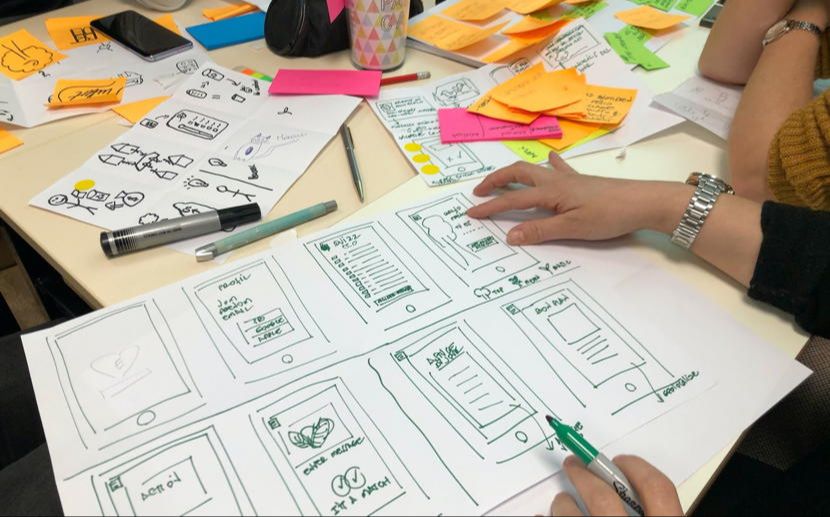
The origins of design thinking
Brainstorming was invented in the 50s, and in the 60s a design training program was created at Stanford. A landmark book, "Design Thinking", published by MIT Press, was written by Peter Rowe. Design thinking is a project creation method developed at Stanford University in the USA in the 1980s by Rolf Faste. In 1991, Idéo popularized its methods, which focus on the customer experience, and the method was widely adopted.
In addition to technological solutions, the aim is to explore the user experience. Today, the term Ux Design is used to describe user experience design. The approach is based on two key principles.
The first principle is that of an iterative process, i.e. you can return to previous stages if the current one is inconclusive. This distinguishes design thinking from a linear project process.
The second principle lies in the cooperative operation of diverse, multi-disciplinary teams of different ages and experience at each stage. It should also be noted that design thinking is a process that places people at the heart of experimentation with new solutions, with a logic of rapid, methodical prototyping.
The 5 key stages of the design thinking method
The design thinking process is led by a "facilitator" or designer, who remains neutral and does not seek to influence participants.
Step 1 - Use empathy
In the manner of an anthropologist, this involves defining the target audience and obtaining a clear vision of the problems encountered by users and what they need. It's about understanding their context, what they say they think and feel. Surveys and contextual immersion are the best solution, but it's also possible to fill in an "Empathy Map", organize a survey, lead a focus group or conduct a user test, meet users in the street, or create personas that embody users.
Step 2 - Diagnosis
In this stage, the aim is to understand the nature of the challenge, the points of friction and the problems faced by users, for example, by establishing a "user journey" or experience map, or based on critical incidents. The aim is to identify what is minimum, what is normal and what would be a real break in the service provided.
Step 3 - Build the concept
Create the concept that will deliver the solution using a diverse team to generate a wealth of ideas, based on 3 stages
-Ice-breaking games within the group, to express personal feelings.
-Brainstorming to stimulate creativity (here 20 methods). During this stage, it's possible to propose new constraints or change the rules along the way, to get the group out of its routine,
-The selection of the best viable, feasible ideas according to the criteria and constraints set out in the diagnosis.
Step 4 - Prototyping
The prototyping stage consists of moving as quickly as possible towards the materialization of a solution, and expressing it in creative form using a drawing (poster, metaphor, figurative drawing, plan), in the form of a cut-out, a digital model, an assembly for example, or even in the form of a video and its more or less complex storyline ranging from a hero's journey to a novel-like composition.
The prototype can also be a role-playing game or a theatrical stage on which to play out the imagined solutions. Whatever its form, the prototype aims for simplicity and rapidity. It needs to be usable quickly enough to be understood by users and to benefit from their feedback. It doesn't need to be aesthetic or functional at this stage. Its function is to suggest the solution in preparation
Step 5 Testing
The testing stage consists of exposing the prototypes to users to understand what they think, feel and are motivated by. If the design thinking session takes place with several teams, a pre-test crossing the opinions of the teams is possible. It's also possible to address a prototype to a mass of online users and circulate it to receive a variety of opinions in rapid iteration. This is known as crowdtesting. This solution is particularly well-suited to software or any other digital solution.
Finally, in the testing stage, AI can be used to collect and analyze user feedback in an automated way. Chatbots and semantic analysis systems enable a deeper understanding of user reactions, but again, AI cannot always interpret human emotions with the same precision as a human being.
The original content of the note was published on Cursus.edu. To read the full note visit here